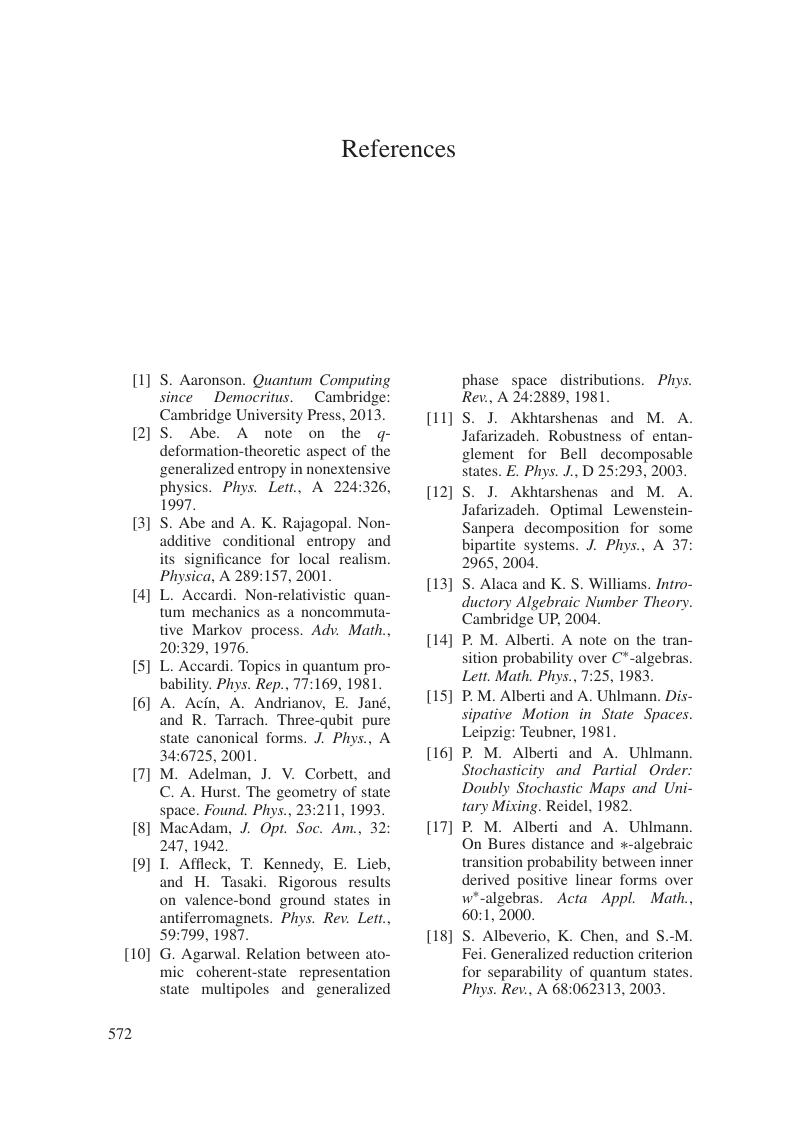Book contents
- Frontmatter
- Contents
- Preface
- Acknowledgements
- 1 Convexity, colours and statistics
- 2 Geometry of probability distributions
- 3 Much ado about spheres
- 4 Complex projective spaces
- 5 Outline of quantum mechanics
- 6 Coherent states and group actions
- 7 The stellar representation
- 8 The space of density matrices
- 9 Purification of mixed quantum states
- 10 Quantum operations
- 11 Duality: maps versus states
- 12 Discrete structures in Hilbert space
- 13 Density matrices and entropies
- 14 Distinguishability measures
- 15 Monotone metrics and measures
- 16 Quantum entanglement
- 17 Multipartite entanglement
- Epilogue
- Appendix A Basic notions of differential geometry
- Appendix B Basic notions of group theory
- Appendix C Geometry: do it yourself
- Appendix D Hints and answers to the exercises
- References
- Index
- References
References
Published online by Cambridge University Press: 30 August 2017
- Frontmatter
- Contents
- Preface
- Acknowledgements
- 1 Convexity, colours and statistics
- 2 Geometry of probability distributions
- 3 Much ado about spheres
- 4 Complex projective spaces
- 5 Outline of quantum mechanics
- 6 Coherent states and group actions
- 7 The stellar representation
- 8 The space of density matrices
- 9 Purification of mixed quantum states
- 10 Quantum operations
- 11 Duality: maps versus states
- 12 Discrete structures in Hilbert space
- 13 Density matrices and entropies
- 14 Distinguishability measures
- 15 Monotone metrics and measures
- 16 Quantum entanglement
- 17 Multipartite entanglement
- Epilogue
- Appendix A Basic notions of differential geometry
- Appendix B Basic notions of group theory
- Appendix C Geometry: do it yourself
- Appendix D Hints and answers to the exercises
- References
- Index
- References
Summary

Information
- Type
- Chapter
- Information
- Geometry of Quantum StatesAn Introduction to Quantum Entanglement, pp. 572 - 613Publisher: Cambridge University PressPrint publication year: 2017
